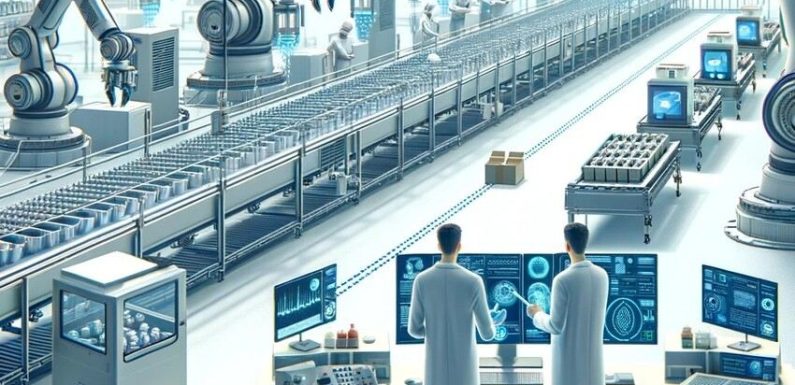
In recent years, the food industry has witnessed a significant transformation in quality control techniques. These advancements are not just enhancing food safety and quality but are also setting new standards in food production and distribution. This article explores various innovative quality control techniques that are revolutionizing the food sector, making it safer, more efficient, and more sustainable.
1. Advanced Spectroscopy and Imaging Techniques
One of the cutting-edge technologies in food quality control is spectroscopy, which includes hyperspectral imaging and near-infrared (NIR) spectroscopy. These techniques allow for non-destructive testing of food products on the production line, providing real-time data on the chemical and physical properties of the food. This method is particularly useful in detecting contaminants and ensuring the uniformity of products. For example, hyperspectral imaging can identify foreign objects in food products that are not visible to the naked eye.
2. Blockchain for Traceability
Blockchain technology is being increasingly adopted in the food industry as a powerful tool for enhancing traceability and transparency. By creating a decentralized and immutable ledger of all transactions, blockchain allows for the tracking of each product from the farm to the consumer. This technology helps in quickly identifying the source of contamination during food safety outbreaks, significantly reducing the response time and limiting the impact. Moreover, it assures consumers about the authenticity and safety of their food.
3. Internet of Things (IoT) in Quality Control
The Internet of Things (IoT) has found numerous applications in the food sector, particularly in monitoring storage conditions along the supply chain. IoT sensors can be used to monitor temperature, humidity, and other environmental factors that affect food quality. Data collected from these sensors are analyzed in real-time to ensure that conditions remain within safe limits, thus preventing spoilage and ensuring the freshness of food products.
4. Machine Learning and Predictive Analytics
Machine learning algorithms are transforming food quality control by predicting potential issues before they become evident. These systems analyze vast amounts of data collected from various points in the production and supply chain to identify patterns that could indicate problems such as equipment failure or deviations in the production process that might affect quality. This proactive approach not only helps in maintaining high standards of quality but also reduces waste and increases the efficiency of the production process.
5. Robotic Systems for Automated Inspection
Robotic systems equipped with advanced vision systems and artificial intelligence are being used for automated inspection tasks in the food industry. These robots can perform detailed inspections at high speeds, surpassing human accuracy and efficiency. For instance, robotic arms equipped with vision systems are used in fruit sorting operations to ensure that only those meeting specific quality standards reach the consumer. This not only speeds up the process but also significantly reduces human error.
6. Enhanced Microbiological Testing Techniques
Rapid microbiological testing methods, such as PCR (polymerase chain reaction) technology and ATP bioluminescence, are revolutionizing microbiological analysis in food quality control. These techniques allow for the detection and quantification of pathogens in hours rather than days, which traditional culturing methods required. Faster testing leads to quicker decision-making, reducing the risk of foodborne illnesses and outbreaks.
7. Integration of Quality Control Systems with ERP Software
The integration of quality control systems with Enterprise Resource Planning (ERP) software is streamlining operations across the food production chain. This integration allows for better data management and accessibility, enabling quick responses to quality issues. It also helps in maintaining compliance with regulatory standards by ensuring that all procedures are followed and properly documented.
Conclusion
The food industry is undergoing a significant shift thanks to these innovative quality control techniques. From advanced imaging systems and blockchain to IoT and machine learning, each technology brings a unique set of benefits that enhance the safety, efficiency, and sustainability of food production and distribution. As these technologies continue to evolve and integrate, the future of food quality assurance looks promising, ensuring that consumers have access to safe, high-quality food products. This revolution in quality control is not just improving standards but is also setting a new benchmark for industries worldwide.
Tech World Times (TWT), a global collective focusing on the latest tech news and trends in blockchain, Fintech, Development & Testing, AI and Startups. If you are looking for the guest post then contact at techworldtimes@gmail.com

